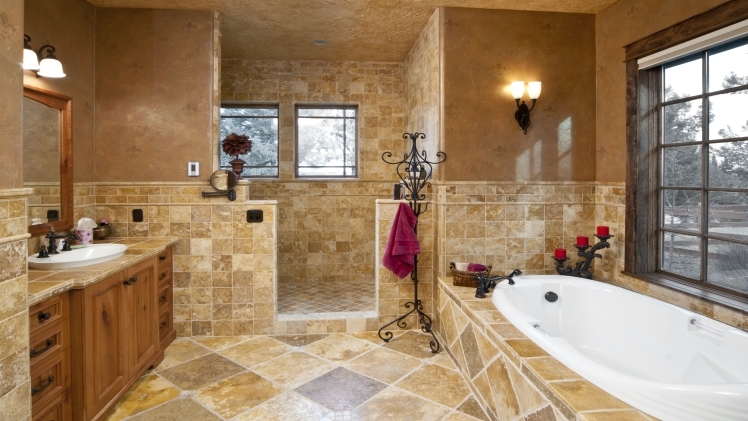Although homeowners spend less time in the bathroom than in any other region, it doesn’t indicate that the walls are safe from harm. For a number of causes, including humidity and possible water leakage, bathroom walls may be affected. You should cover them if the walls are solid and the damage is superficial. Damage to the building, free tiles, collapsing mortar, rot or mould needs more of a rigorous repair than a band helper solution. Tub enclosures are also essential for the neat and clean look.
1. Decorative Tiles
It’s one of the few ways to hide drywall or mortar. If the walls surround a shower or bathtub, tile backer board is not needed. Wallpaper must be removed, and painted walls can be sanded to provide colour before tiles are installed. If the walls are lumpy or have cracks, you’ll need to do some prep work first. Wall dents are filled with drywall joint compound, but holes require a drywall patch before tiling. Sandpaper may be used to smooth out bumps or raised points on the wall. In bathrooms, almost every glazed tile or stone would do, and the look can be carried from ceiling to floor. Tile grout that isn’t sanded will fit or compliment the tiles, while sanded grout is used on floors with larger grout joints.
2. Creative wallpapers
Wallpaper may be used to cover plasters or drainage if the walls are sound and the surface is smooth and flat In certain cases, it may also mask bumps, dings, poorly finished drywall and other minor defects. You must first remove any ancient, unattractive wallpaper. Once the old wallpaper has been scraped and peeled, the walls can be thoroughly washed with cleaning or soft soap and warm water. Vinyl-coated wallpaper resists the intrusion of moisture, whereas pruned papers have a high level which can mask tiny bumps. Wallpapering tub enclosures are not possible but maybe some sort of cool and nice thought to perform.
3. The use of panelling
Wall boards may be used for covering all or part of the walls you choose to conceal, such as bead board boards. It may be mounted on painted or wallpapered plasters or drywalls. Tongue-and-groove board bars or boxes have similar appearance with fastening tongues and grooves. Baseboard and crown mouldings are going to better bridge minor gaps if they are a little bigger. Baseboard is used on the lower side, and the top edge requires the rail chair moulding. If you choose to get greater coating, you can trim 8-foot panels or planks to the perfect height. Building glue is used on the back of panels and planks and is fastened to the wall by using finishing nails.
4. Stain-resistant spray primary
Stains on painted walls can quickly be cleaned, such as those due to old water leakage or oversprays. Fix the hole first before covering the stains if the stains are caused by a leak. If the stains look big, like old hairspray stains, then first smoother the walls with a mild detergent or soap and hot water and paint them. Various marks are protected with stainless polish, which provides a barrier that keeps them from returning to the board. In certain cases, you can need two or three coats. The freshly painted or wallpaper board will be painted or wallpapered until the primer has dried.
Covering up all things
There are multiple options for covering wall tiles in the bathroom. The most critical thing to remember is that your plans have to be waterproof. While they are not wet from the sink or bath, they are forced to tolerate more condensation from the moisture of the shower. Tub enclosures surely needed for the astonished feel.

